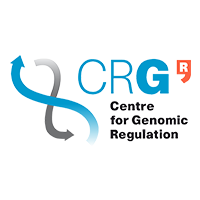TraP-MEDD
Translational Platform for MSA: Elucidation of Disease-mechanisms and Drug discovery: TraP-MEDD
Project summary
Multiple system atrophy (MSA) is a rare neurodegenerative synucleinopathy that differs from Parkinson’s disease (PD) due to greater severity and poor levodopa response. In MSA, unlike PD, alpha-synuclein is found predominantly inside oligodendrocytes rather than neuronal bodies. There is no cure for this disease, and life expectancy is 8-9 years. Our proposal aims to generate reliable human in vitro and humanized animal models and use multilayer OMIC data for generating a molecular interacting network using computational approaches to elucidate disease mechanisms and accelerate drug discovery.
Our center (FCRB) founded a clinical and biosample registry for this disease. We have partnered with the CRG at Barcelona for iPSC generation from fibroblasts collected at our center and their differentiation into oligodendrocytes (primary cell affected in this disease). We will characterize these cells at a transcriptomic, epigenomic and proteomic level. We will also send MSA brain tissue to our partner in France (Dr.Melki’s lab), who will amplify a-synuclein from these brains using PMCA technique, characterize their conformation, and study their interactome (proteins that interact with a-syn receptors on membrane or cytosol). Subsequently, the amplified a-syn fibrils will be sent to CRG for cultivation with the oligodendrocytes. Again, we will study these cells using a multilayer ‘OMIC’ approach to see the changes after a-syn exposure and the changing interactome. In parallel, our 4th partner in Belgium will be characterizing a viral vector humanized rodent model. All techniques will be validated in this model as well. The idea is to provide specific and reliable data regarding oligodendrocyte function in MSA and control cases and its interactions with different strains of a-syn. Specific targets and interactors will be elucidated via computational analyses with the support from core member Douglas Armstrong’s lab leading to creating an insilico model for therapeutic candidate prediction. Predicted candidates will be tested in the in vivo rodent model and the in vitro human IPSC-Oligodendrocyte model.
By establishing this translational and holistic platform, we will be accelerating drug discovery, and the models will be available for future drug testing or further biomedical research. Our results will be shared with the scientific community via HBP platforms.
Key facts
Time Frame: 22 December 2022 - 31 March 2023
Origin: FLAG-ERA JTC 2021
Funding: ISCIII (Spain), ANR (France), FWO (Belgium)








